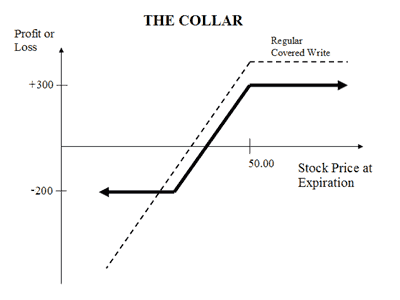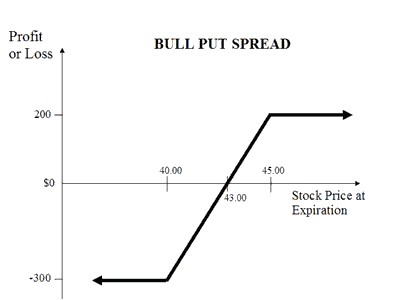 Zerodha (Trading Account)
Zerodha (Trading Account)
FREE Equity Delivery and MF
Flat ₹20/trade Intra-day/F&O
 Zerodha (Trading Account)
Zerodha (Trading Account)
FREE Equity Delivery and MF
Flat ₹20/trade Intra-day/F&O

|
|
Compare Collar and Bull Put Spread options trading strategies. Find similarities and differences between Collar and Bull Put Spread strategies. Find the best options trading strategy for your trading needs.
| Collar | Bull Put Spread | |
|---|---|---|
 |
 |
|
| About Strategy | A Collar is similar to Covered Call but involves another position of buying a Put Option to cover the fall in the price of the underlying. It involves buying an ATM Put Option & selling an OTM Call Option of the underlying asset. It is a low risk strategy since the Put Option minimizes the downside risk. However, the rewards are also limited and is perfect for conservatively Bullish market view. Suppose you are holding shares of SBI currently trading at Rs 250. You can deploy a collar strategy by selling a Call Option of strike price Rs 300 while at the same time purchasing a Rs 200 strike price Put option. If the price rises to Rs 300, your benefit from increase in value of your holdings and you will lose net premiums. If the price falls... Read More | A Bull Put Spread (or Bull Put Credit Spread) strategy is a Bullish strategy to be used when you're expecting the price of the underlying instrument to mildly rise or be less volatile. The strategy involves buying a Put Option and selling a Put Option at different strike prices. The risk and reward for this strategy is limited. A Bull Put Strategy involves Buy OTM Put Option and Sell ITM Put Option. For example, If you are of the view that the price of Reliance Shares will moderately gain or drop its volatility in near future. If Reliance is currently trading at Rs 600 then you will buy an OTM Put Option at Rs 700 and a sell an ITM Put Option at Rs 550. You will make a profit when, at expiry, Reliance closes at Rs 700 level and incur losse... Read More |
| Market View | Bullish | Bullish |
| Strategy Level | Advance | Advance |
| Options Type | Call + Put + Underlying | Put |
| Number of Positions | 3 | 2 |
| Risk Profile | Limited | Limited |
| Reward Profile | Limited | Limited |
| Breakeven Point | Price of Features - Call Premium + Put Premium | Strike price of short put - net premium paid |
| Collar | Bull Put Spread | |
|---|---|---|
| When to use? | The Collar strategy is perfect if you're Bullish for the underlying you're holding but are concerned with risk and want to protect your losses. |
This strategy works well when you're of the view that the price of a particular underlying will rise, move sideways, or marginally fall. |
| Market View | Bullish When you are of the view that the price of the underlying will move up but also want to protect the downside. |
Bullish When you are expecting a moderate rise in the price of the underlying or less volatility. |
| Action |
|
A Bull Put Strategy involves Buy OTM Put Option + Sell ITM Put Option. For example, If you are of the view that the price of Reliance Shares will moderately gain or drop its volatility in near future. If Reliance is currently trading at 600 then you will buy a OTM PUT OPTION at 700 and a sell a ITM PUT OPTION at 550. You will make a profit when at expiry Reliance closes at 700 level and incur losses if the prices fall down below the current price. |
| Breakeven Point | Price of Features - Call Premium + Put Premium |
Strike price of short put - net premium paid |
| Collar | Bull Put Spread | |
|---|---|---|
| Risks | Limited You will incur maximum losses when price of the underlying is less than the strike price of the Put Option. Max Loss = Purchase Price of Underlying - Strike Price of Long Put - Net Premium Received |
Limited Maximum loss occurs when the stock price moves below the lower strike price on expiration date. Max Loss = (Strike Price Put 1 - Strike Price of Put 2) - Net Premium Received Max Loss Occurs When Price of Underlying <= Strike Price of Long Put |
| Rewards | Limited You will incur maximum profit when price of underlying is greater than the strike price of call option. Max Profit = Strike Price of Short Call - Purchase Price of Underlying + Net Premium Received |
Limited Maximum profit happens when the price of the underlying moves above the strike price of Short Put on expiration date. Max Profit = Net Premium Received |
| Maximum Profit Scenario | Underlying goes up and Call option exercised |
Both options unexercised |
| Maximum Loss Scenario | Underlying goes down and Put option exercised |
Both options exercised |
| Collar | Bull Put Spread | |
|---|---|---|
| Advantages | It protects the losses on underlying asset. |
Allows you to benefit from time decay in profit situations. Helps you profit from 3 scenarios: rise, sideway movements and marginal fall of the underlying. |
| Disadvantage | The profit is limited |
Limited profit. Time decay may go against you in loss situations. |
| Simillar Strategies | Covered Put Bull, Call Spread, Bull Put Spread | Bull Call Spread, Bear Put Spread, Collar |

Add a public comment...

FREE Intraday Trading (Eq, F&O)
Flat ₹20 Per Trade in F&O
|
|